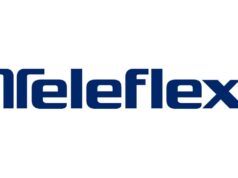The US Food and Drug Administration (FDA) recently selected an investigational stent graft for endovascular treatment of thoracic aortic aneurysms involving branch vessel. The device would be used inan early feasibility pilot programme.
The Valiant Mona LSA system‰Û¥one of nine devices selected for the programme‰Û¥is a stent graft which is being developed by Medtronic and is designed to repair a descending thoracic aortic aneurysm encroaching on the left subclavian artery (LSA). The device is based on the market-leading Valiant Captivia Thoracic Stent Graft, which is approved by the FDA for treating aneurysms/penetrating ulcers and related conditions of the descending thoracic aorta without major surgery.
In 2011, the FDA published a draft guidance document to encourage and facilitate early feasibility studies of innovative medical devices in the United States. The pilot programme will help test and refine the new approaches described in the draft guidance.
According to the guidance document: “An early feasibility study is a limited clinical investigation of a device early in development, typically before the device design has been finalised, for a specific indication (e.g., innovative device for a new or established intended use, marketed device for a novel clinical application). It may be used to evaluate the device design concept with respect to basic safety and device functionality in a small number of subjects (generally fewer than 10 initial subjects) when this information cannot be readily provided through additional nonclinical assessments or appropriate nonclinical tests are unavailable. Information obtained from an early feasibility study may guide device modifications.”
“Endovascular repair of thoracic aortic aneurysms involving branch vessels represents a clinical and technological challenge that Medtronic is committed to solving for the benefit of physicians and patients alike,” said Tony Semedo, vice president and general manager of the company’s Endovascular Therapies business. “In fact, about 40% of these cases involve coverage of the LSA—and, therefore, often require surgical bypass to preserve blood flow to the posterior brain and left arm.”
“Our Valiant Mona LSA system could potentially obviate the need for LSA bypass procedures, extending the benefits of endovascular repair without surgery to more patients with thoracic aortic aneurysms,” Semedo added. “We are pleased that the device was selected by the FDA for its early feasibility pilot programme, which demonstrates the agency’s understanding of the need for collaborative innovation.”
According to the Society for Vascular Surgery (SVS), an estimated 40% of patients with descending thoracic aneurysms have insufficient seal zones for endovascular repair. The seal zone is the circumferential length of healthy aorta required to secure the placement of the stent graft across the aneurysm. Published reports show a higher rate of stroke and mortality associated with coverage of the LSA. Based on these reported adverse events, the SVS has recommended routine pre-operative revascularisation to perfuse the LSA in patients who need elective endovascular repair where achievement of an adequate seal requires coverage of the LSA.
The Valiant Captivia Stent Graft is approved by the FDA for endovascular repair of aneurysms and penetrating ulcers of the descending thoracic aorta in patients with a non-aneurysmal aortic diameter in the range of 18-42mm and non-aneurysmal aortic proximal and distal neck lengths ≥ 20mm.













